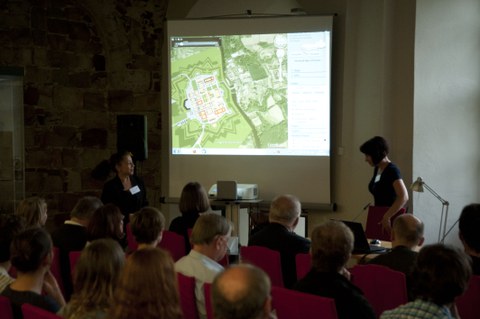Gepam final presentation
The city of Dresden experienced its most profound changes in the 20th century during the years of National Socialism - the persecution, expulsion and murder of citizens of Jewish origin left a void in the city's history that is barely visible in the cityscape after the reconstruction of Dresden from the ruins of the war. The places where people lived and worked, which were linked to the fates of thousands of victims of the Shoah, were forgotten for a long time. The traces of this period can still be seen today in a wide variety of areas - openly or concealed. One of the tasks of those responsible for the culture of remembrance is to ensure that these traces remain legible for today's generations.
The collection of the "Book of Remembrance" working group in Dresden is an important point of contact for coming to terms with the Shoah in and around Dresden. In 2006, this resulted in the "Book of Remembrance", which documents the fates of Dresden citizens and families who were persecuted as Jews between 1933 and 1945. On the other hand, a visit to the "Theresienstadt Memorial" in Terezín in the Czech Republic is also an integral part of Saxony's educational work. Established in 1947, the memorial is one of the central places of remembrance of the crimes committed during the National Socialist era in Central and Eastern Europe, and today it marks the point of departure for any reconciliation between Germans and Czechs.
These two outstanding places of remembrance of the Shoah have now been linked together in a cross-border project. As part of the European Objective 3 program, a multimedia presentation on the topic was created by mid-2014 in cooperation with the Terezín Memorial and the TUD Dresden University of Technology and other Dresden experience providers. The 3D model of the "Landscape of Remembrance" is a virtual representation of the geography of remembrance in the Bohemian-Saxon border region during the Third Reich. At its center is a three-dimensionally scaled map with integrated 3D city models of Theresienstadt and Dresden, into which historical content, events and objects have been integrated using multimedia.
Project website: www.gepam.eu
Here you can find the flyer for the closing event on 23.06.2014.

